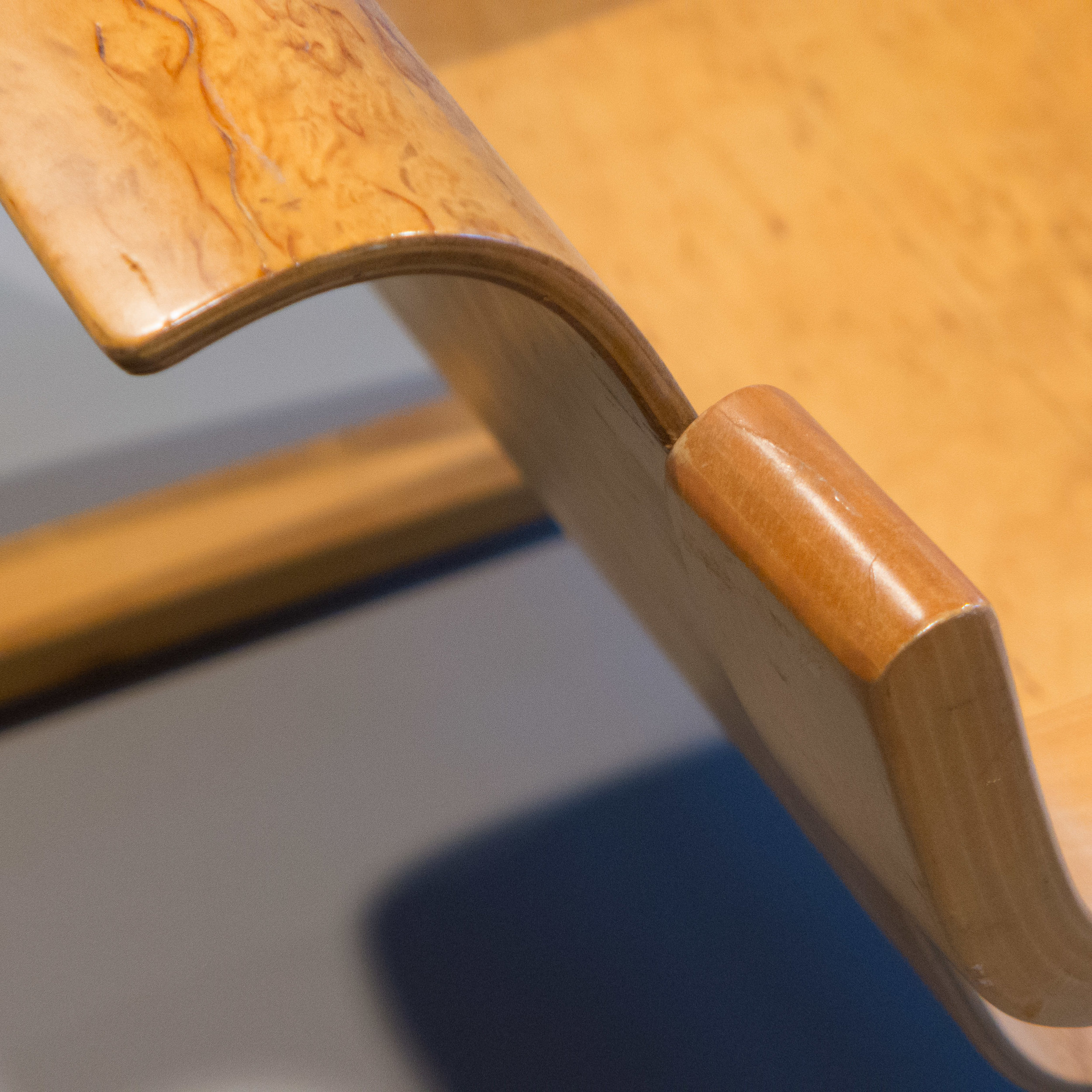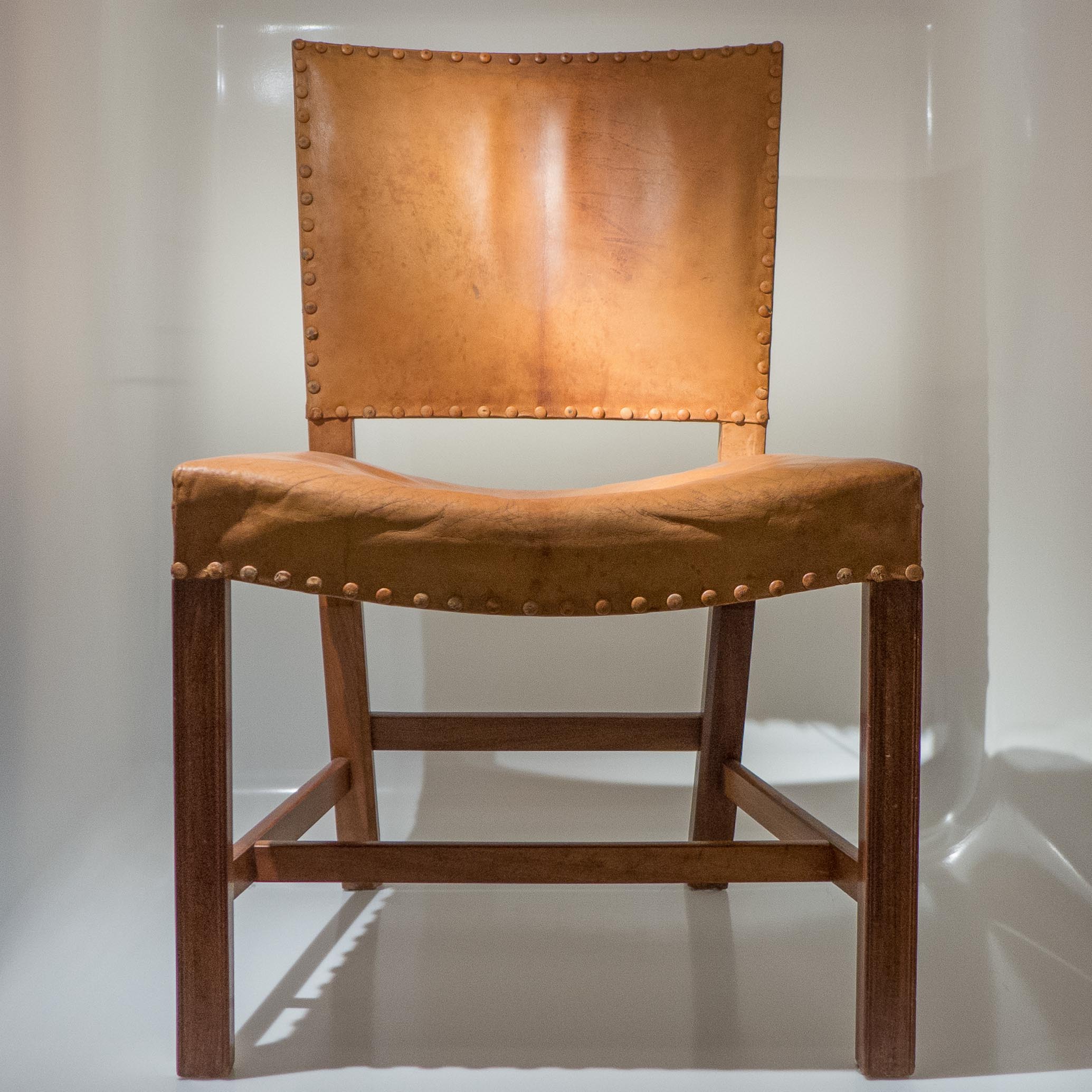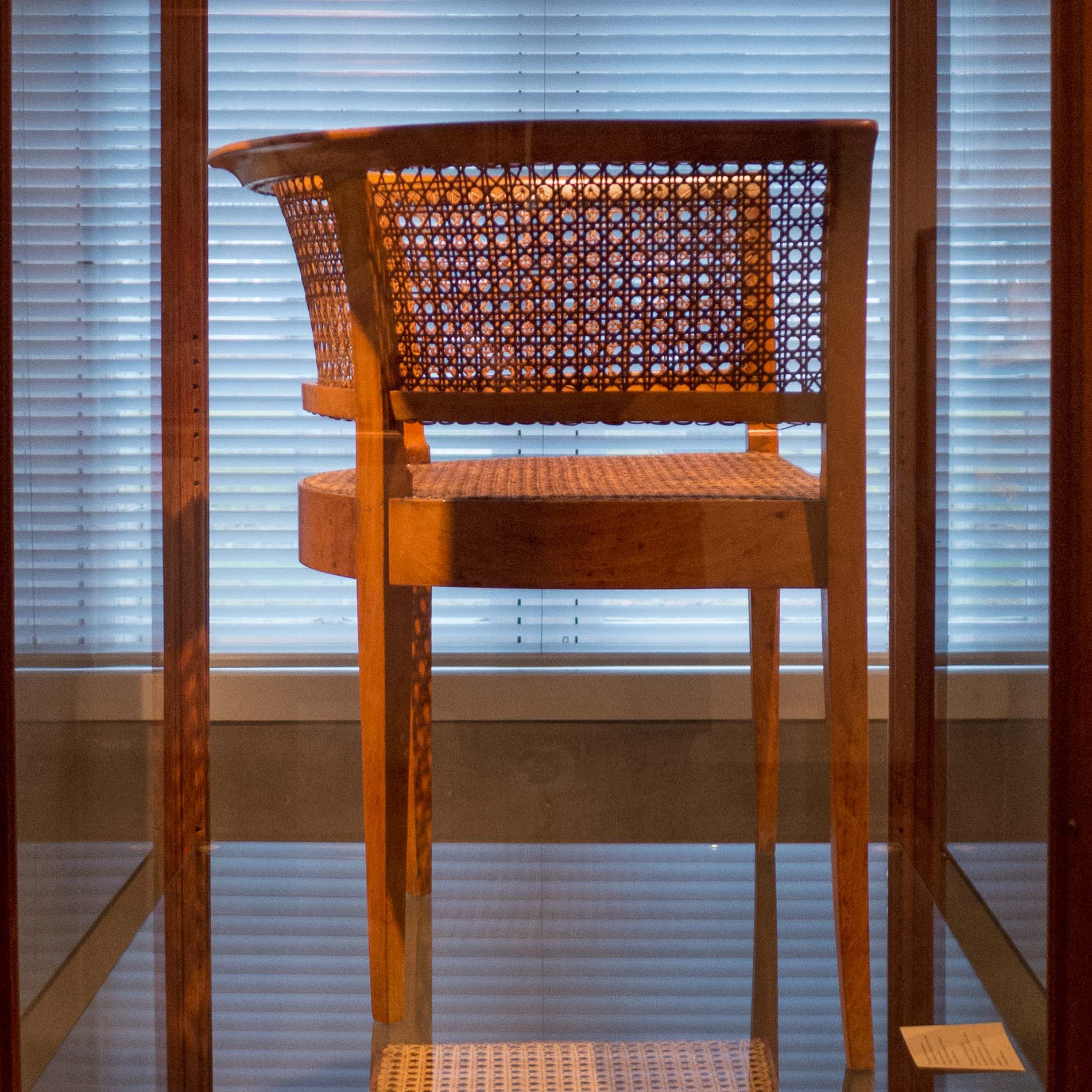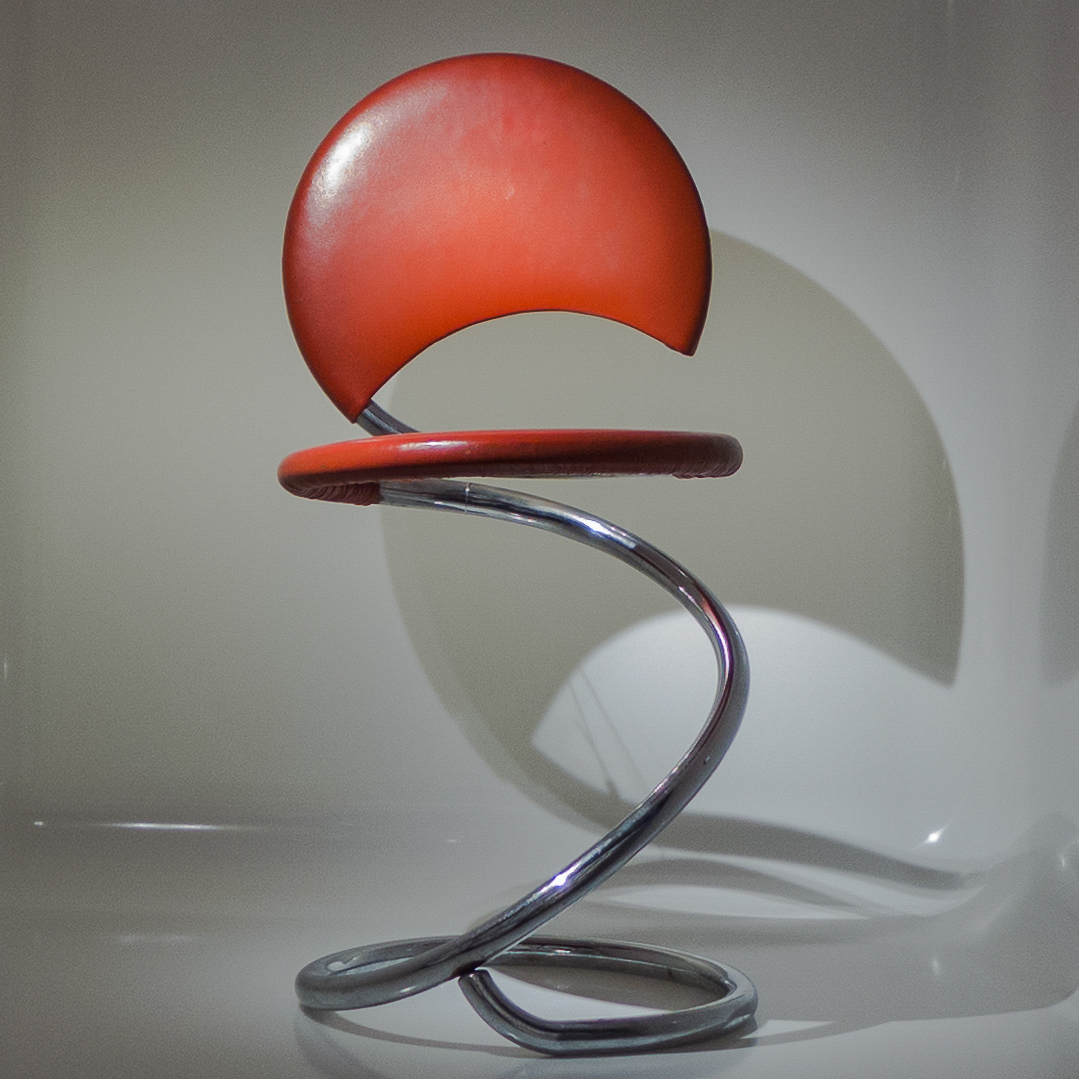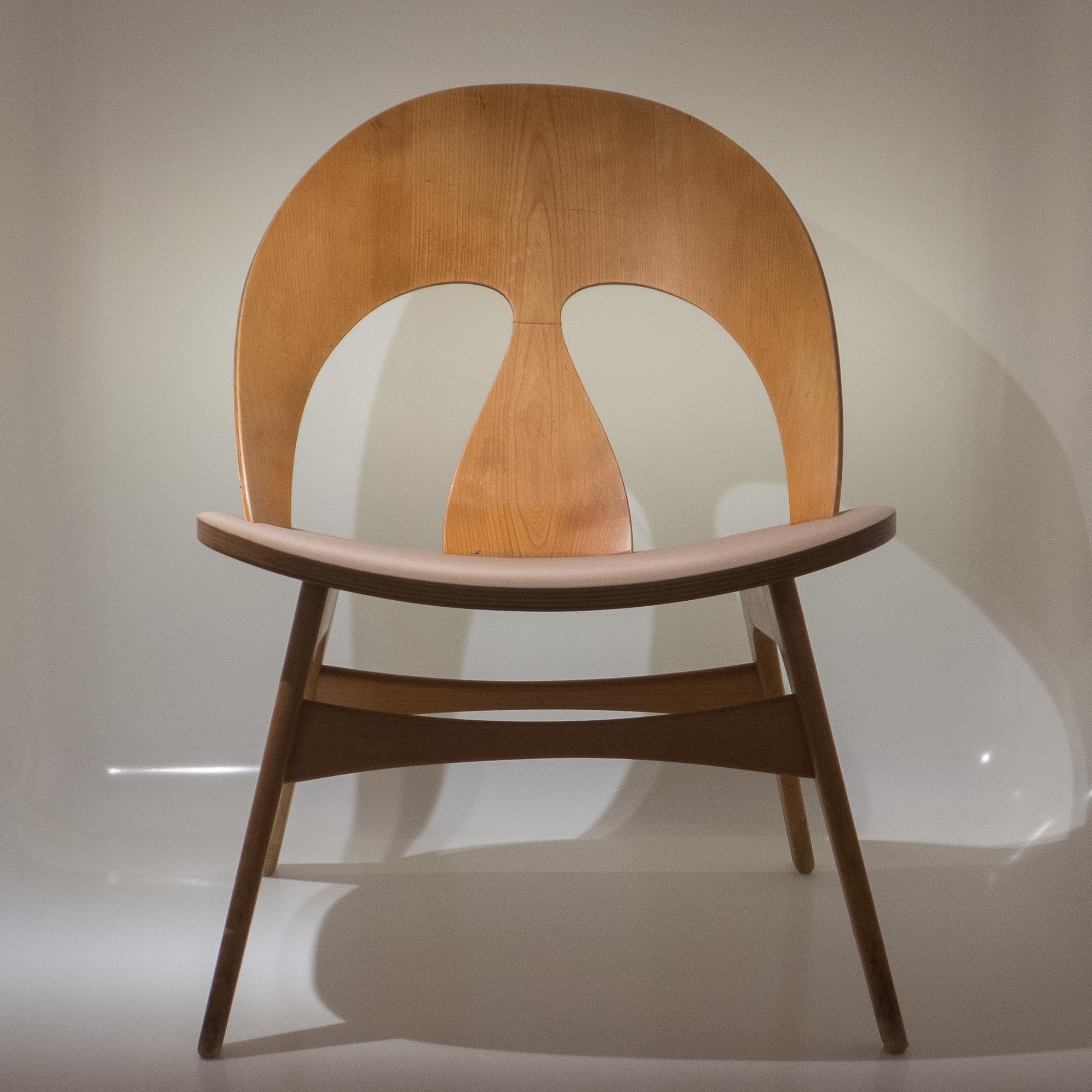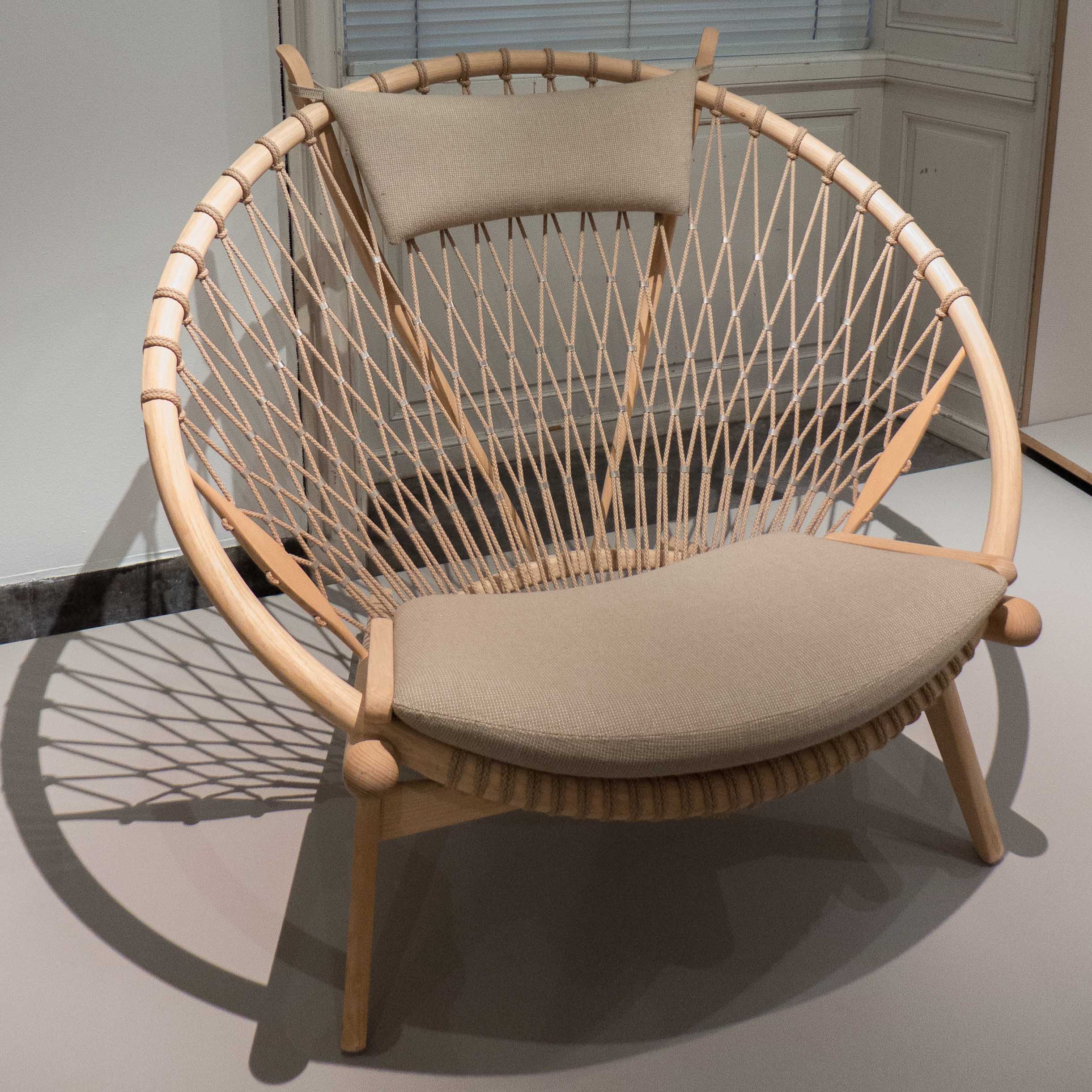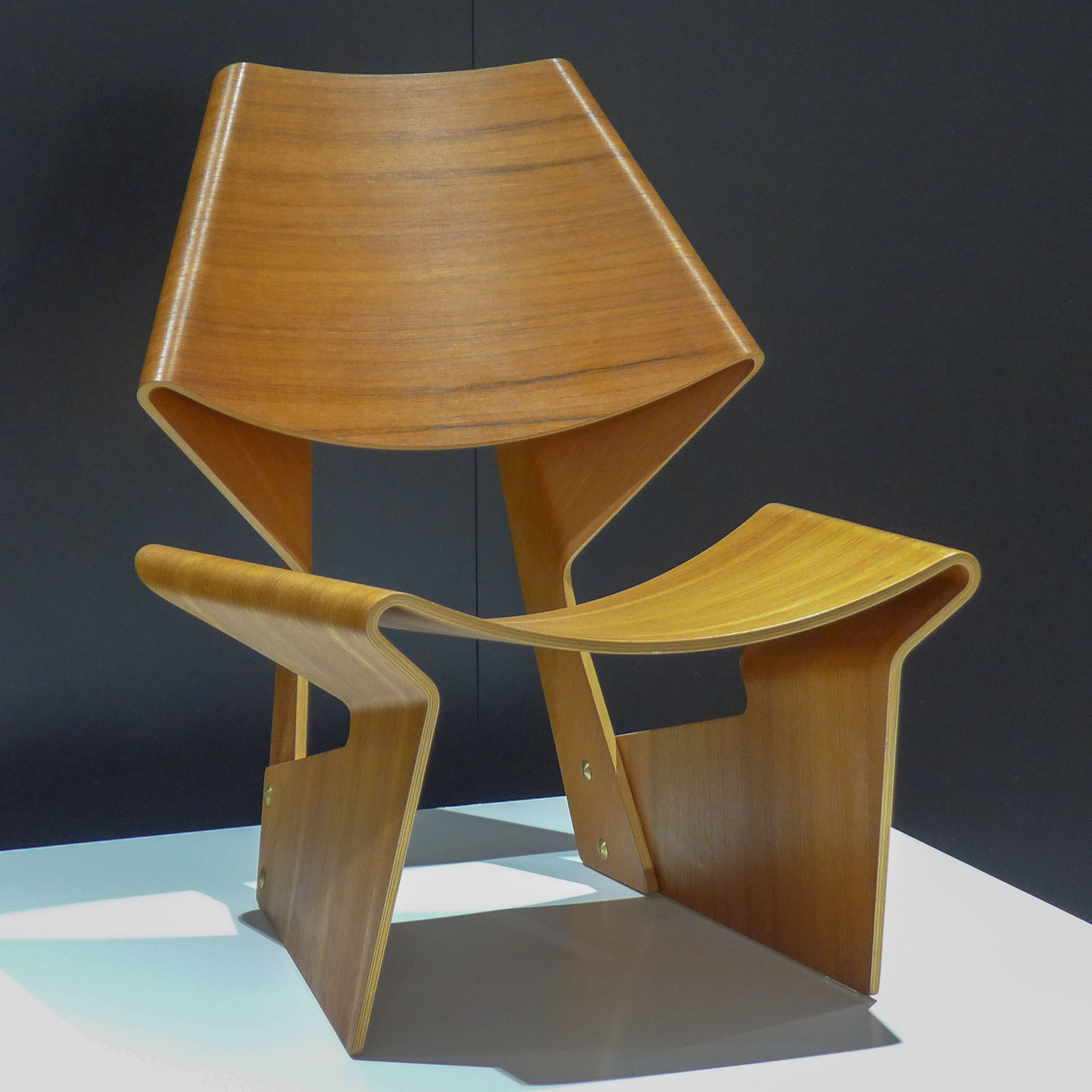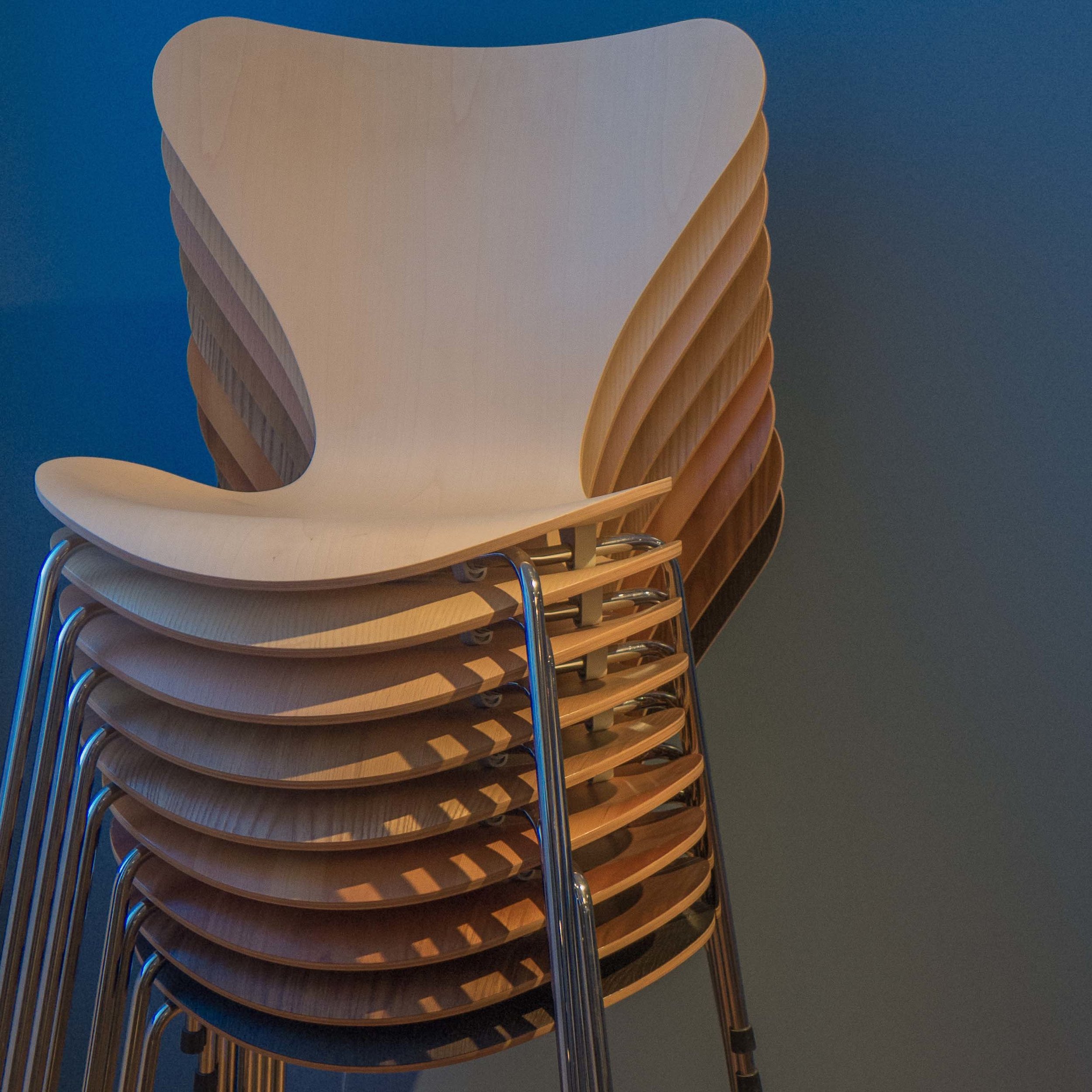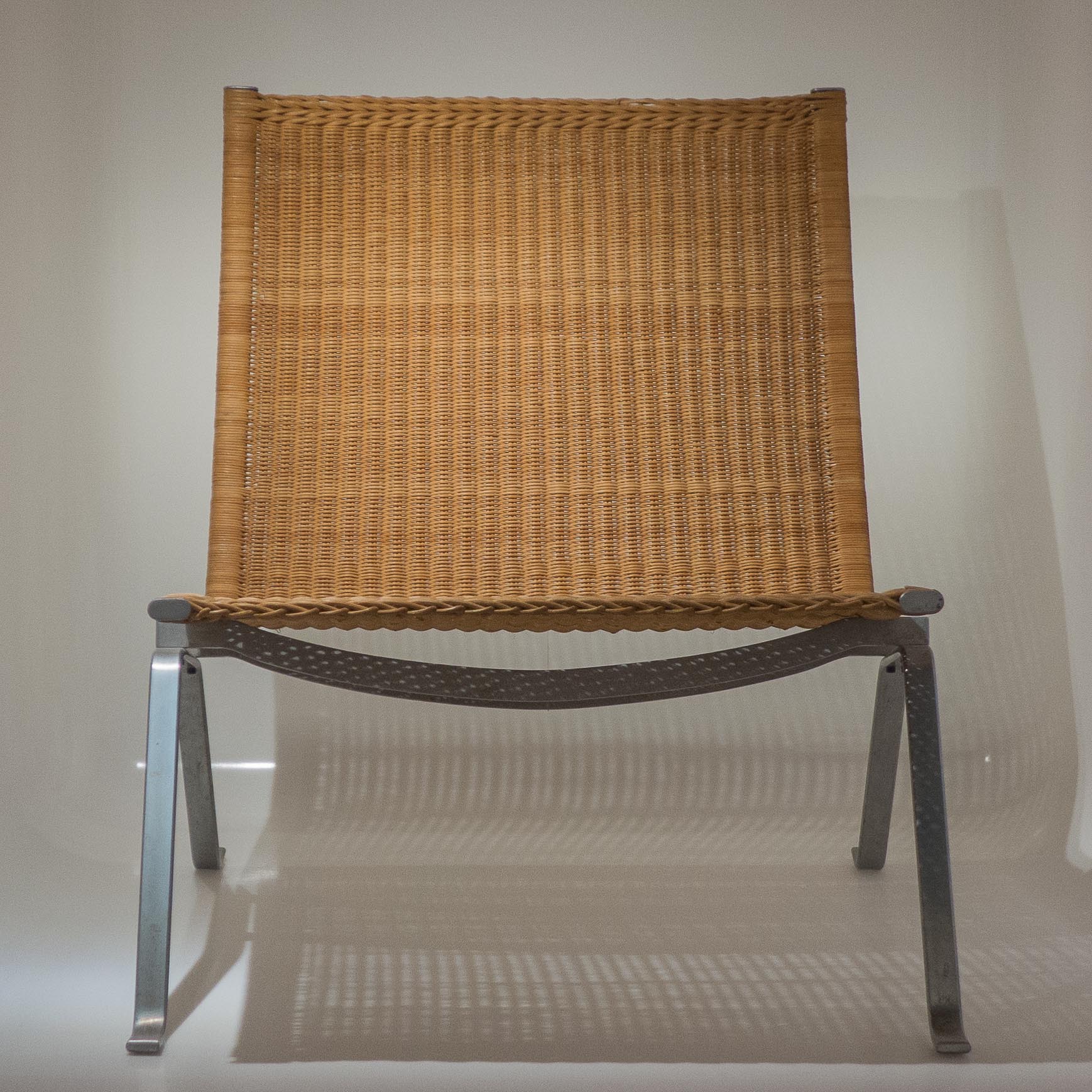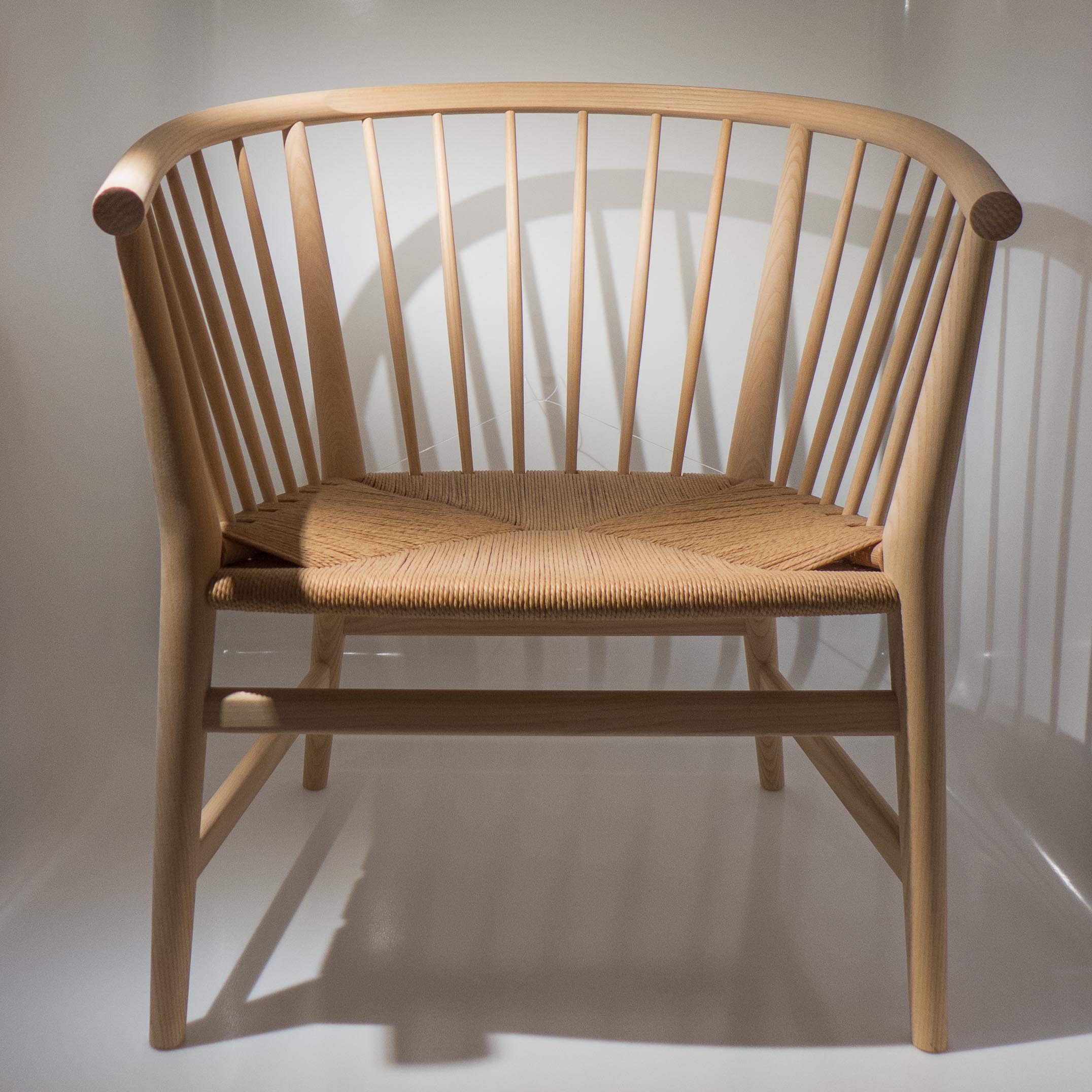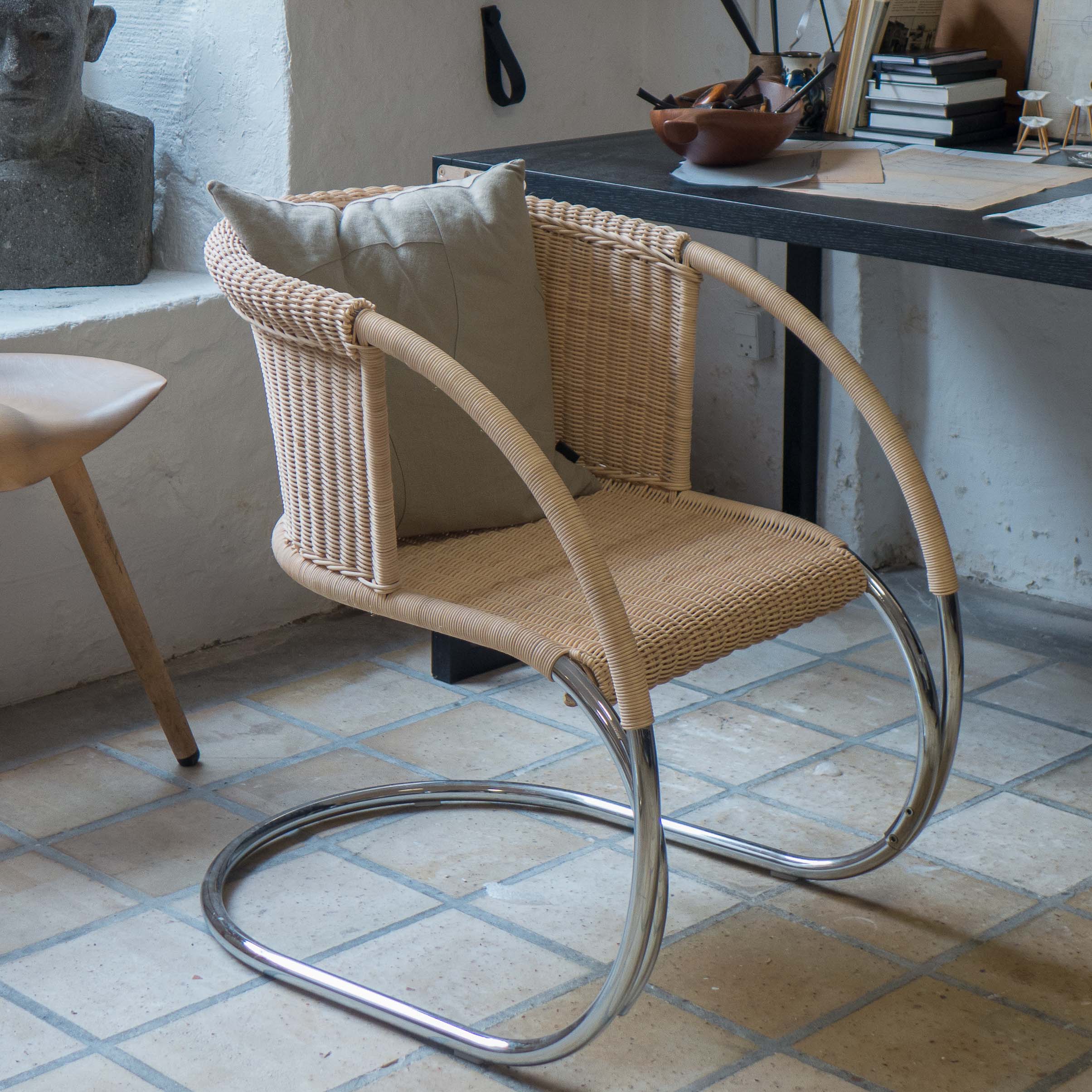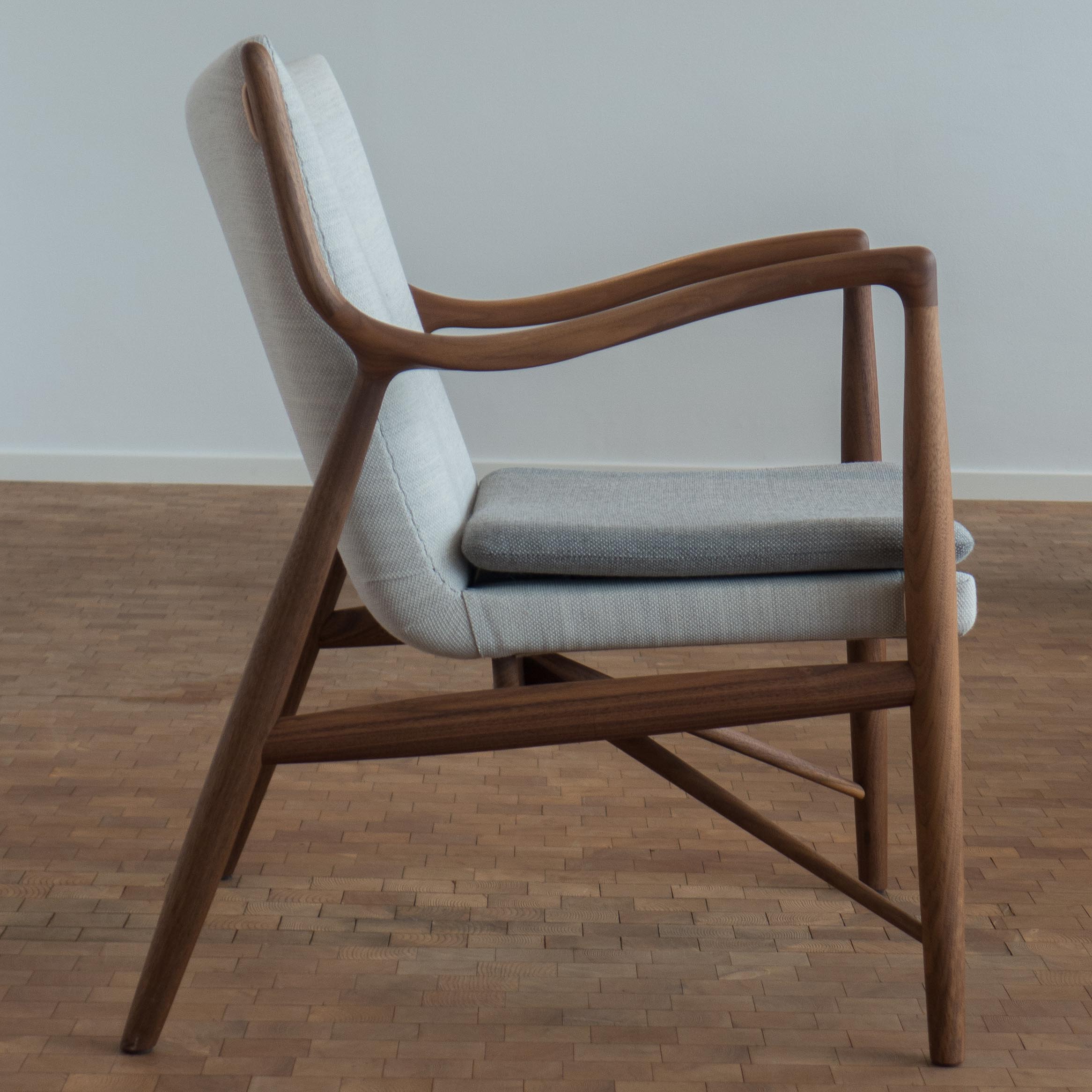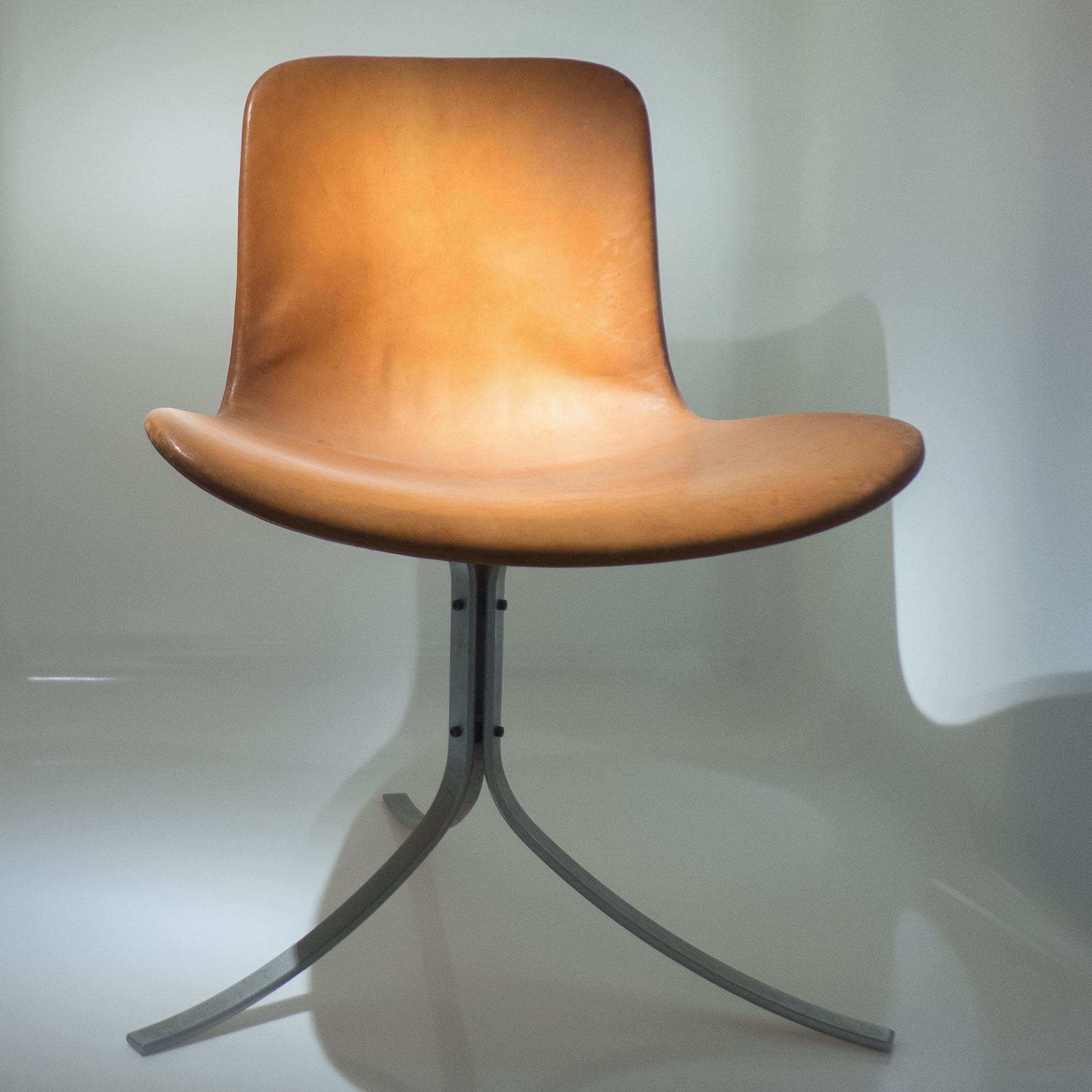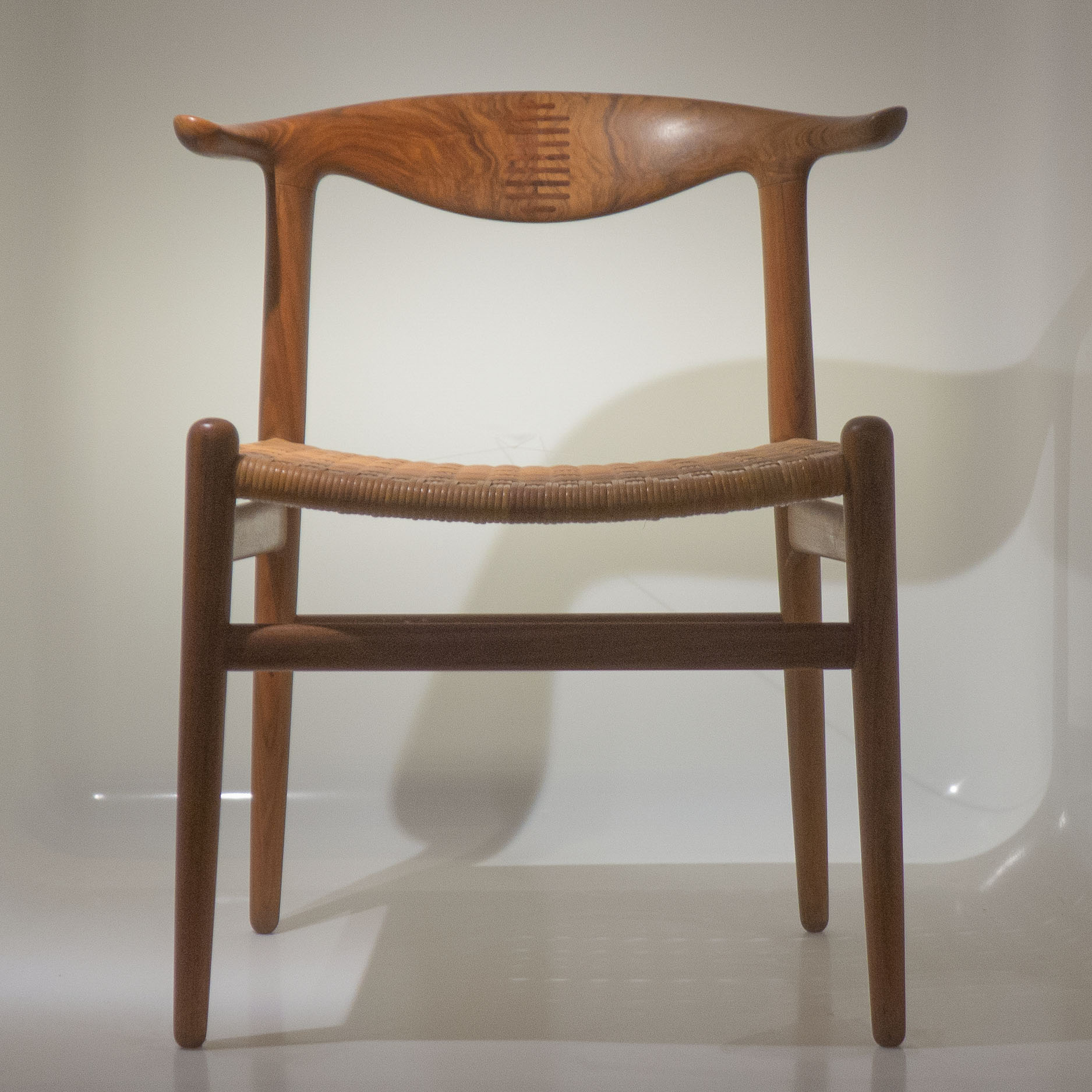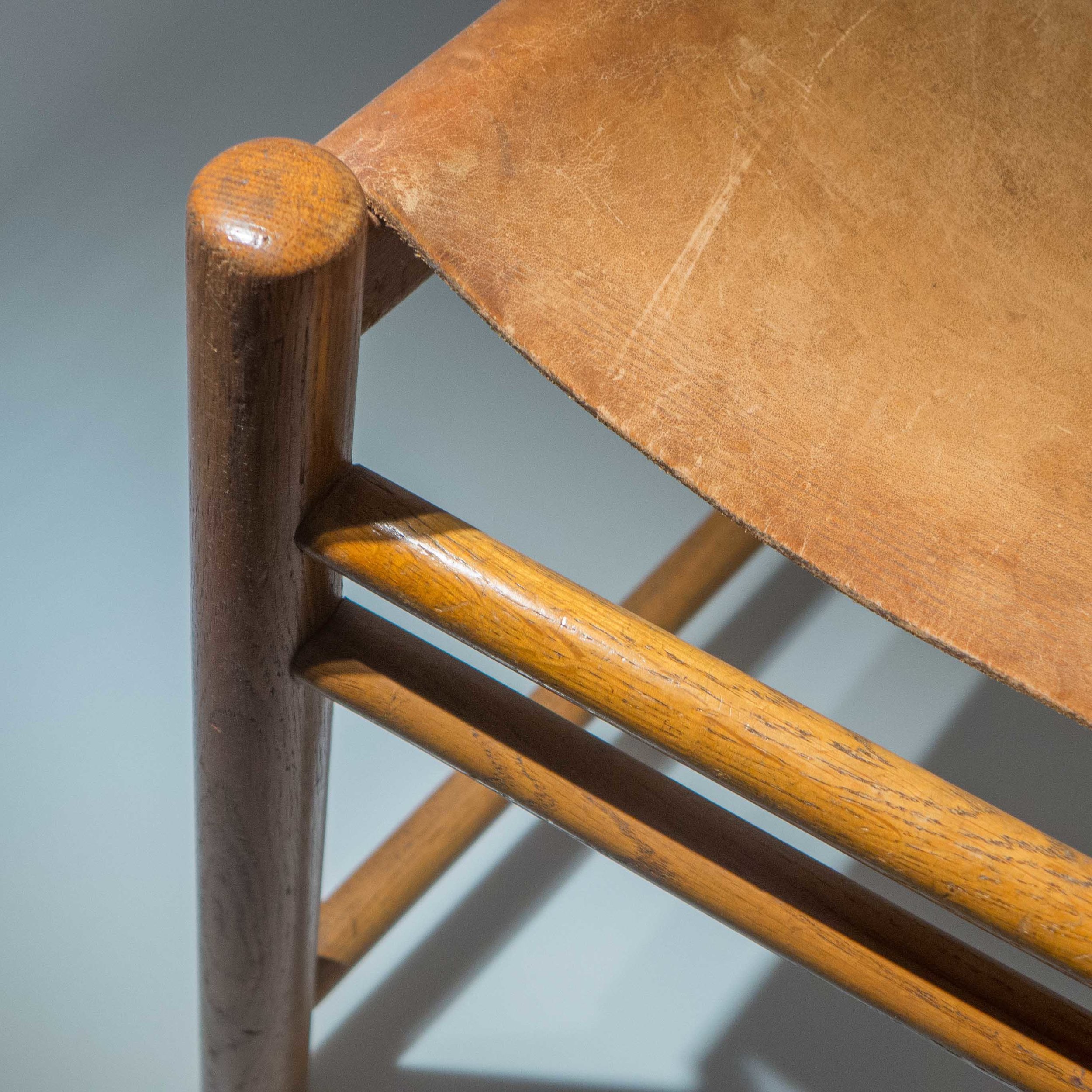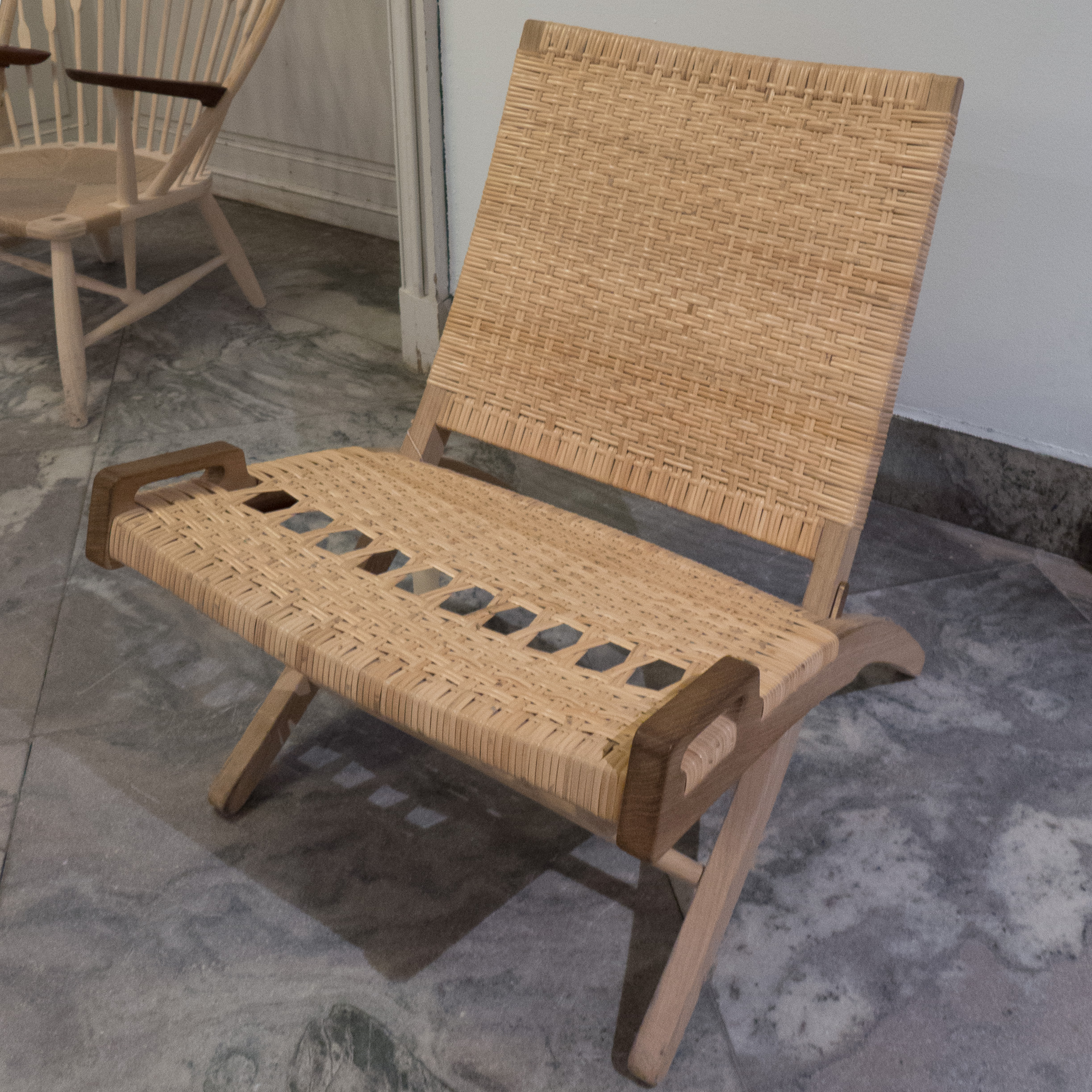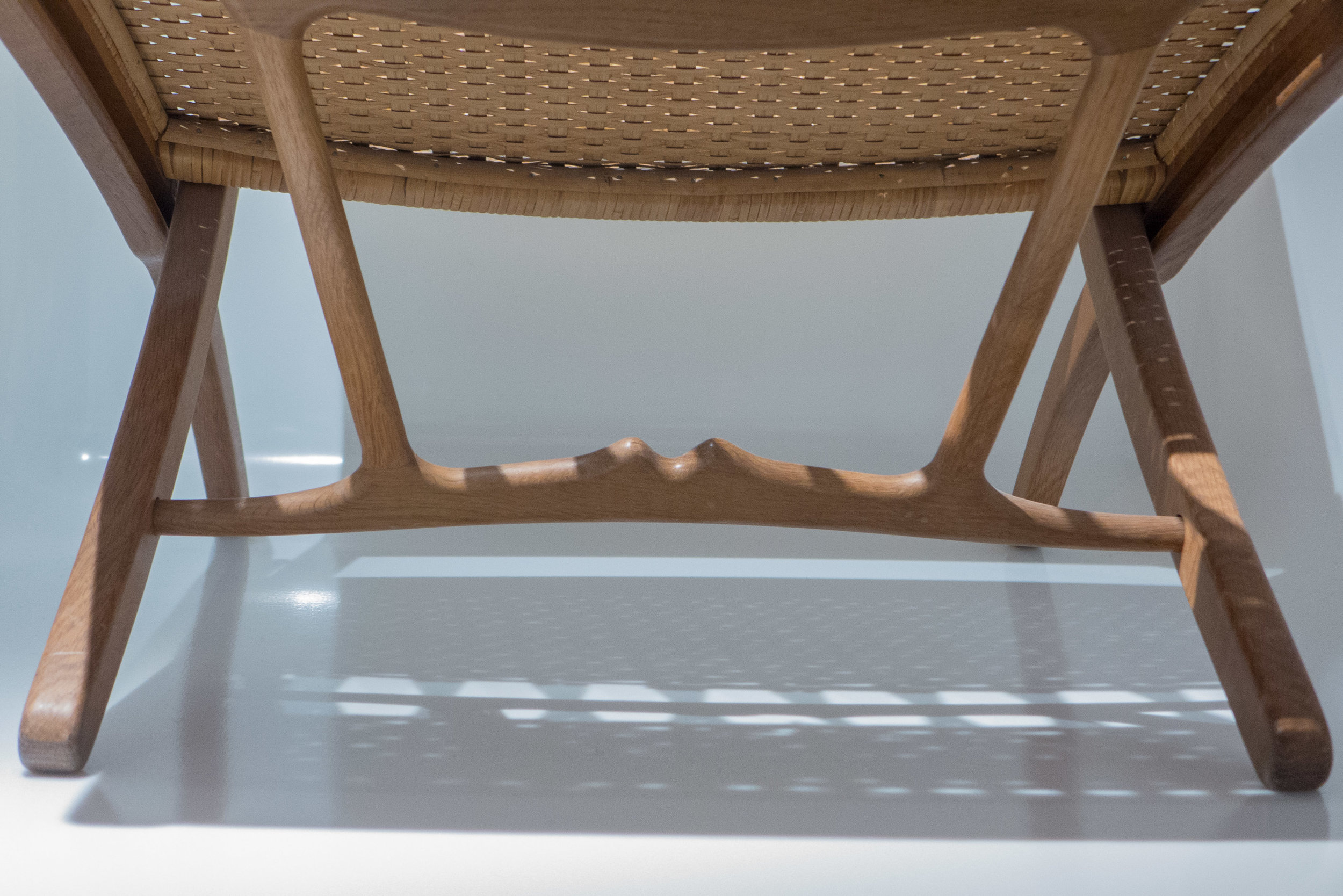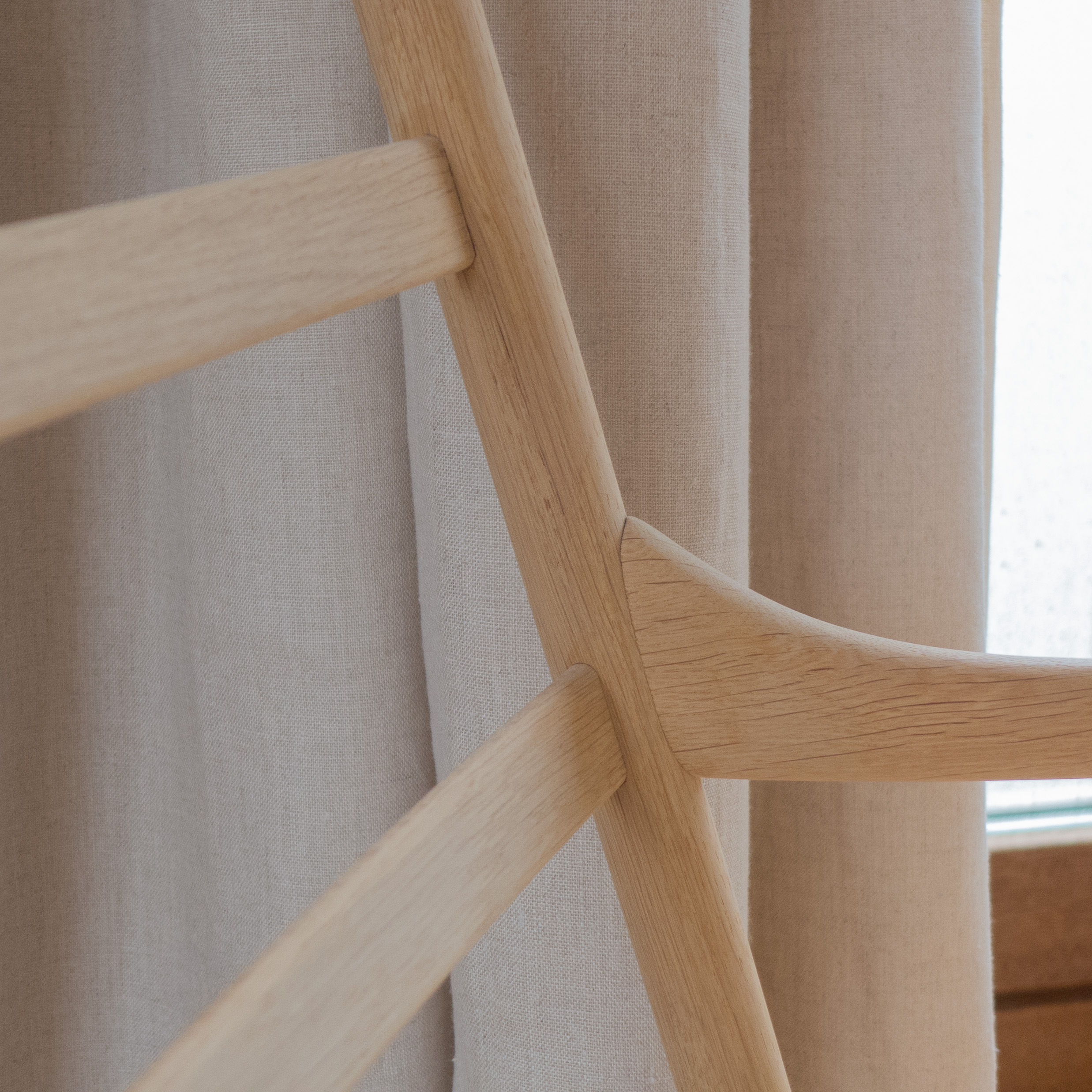Chair 406 by Alvar Aalto 1939
/Alvar Aalto produced several variations on the design of the Paimio cantilever chair of 1932 including versions with upholstered or padded seat and back. Chair 406 - designed in 1939 - is interesting because Aalto reused the design of the cantilevered bentwood frame from the earlier Paimio cantilevered chair but with webbing woven across the frame for the seat and back rest rather than moulded plywood.
This seems to acknowledge the limitations when it was still only possible to curve plywood in one plane … so forming what is, in effect, a scroll shape along the length to form a seat that then curves up to form the back from a single piece of plywood but without also being able to scoop or hollow out the profile across the width of the seat.
The main part of the cantilevered frame of the 406 is a simple elongated H (172cm by 57cm) in laminated wood with the uprights of the H bent to form the runners, the front supports, arm rests and short uprights on either side of the back rest. These main lengths are rectangular in cross section - 1 inch by 2¼ inches (25mm x 57mm) and set flat for maximum strength and flexibility. The crossbar of the H supports the seat and the frame thins down immediately above that cross bar where the curves are tighter and slightly more flexibility is required.
A simple and separate rectangular frame (110cm by 46cm) for the webbing, is bent to a shallow curved shape that forms the seat and the back rest of the chair. The webbing is two inches wide and is taken across the frame and returned underneath and round and nailed or, in the modern chairs, stapled onto the inward facing edge of the frame.
The only other piece of timber is a stretcher, fixed across the back with screws, just above the seat to keep the side pieces of the frame a consistent distance apart and parallel where otherwise they could be forced inwards with the weight of a person sitting in the chair pressing down into the webbing and potentially moving the sides together.
There are remarkably few points of contact between these two parts - between the side frames and the frame of webbing that forms the seat and back and with the pronounced cantilever it reinforces the impression of the seat being suspended in space. Where the seat rests across the cross bar there are long screws - one on each side - that are countersunk and fix the seat frame in place from below and at the top of the arm rests, where the side frames are nearly vertical and running parallel to the back rest, they are fixed together with, I presume, hidden or blind dowels rather than taking a bolt or screw through to link the pieces.
The cross bar of the H-shaped frame and the corners of the frame of the seat / back are fixed with simple butted joins that are glued and again there must be hidden dowels through to fix and hold square the separate pieces. This form of construction is simple and honest and takes straightforward skills, with the holes drilled and controlled by jigs or patterns, but cabinetmaking skills are not required. The form and construction of the chair reflects honestly that it was designed to be made in a factory system rather than in a cabinetmakers' workshop.
details of the frame - from the top, the front of the seat from the side and from above and the front edge of the seat from underneath to show there is a single countersunk screw on each side to fix the seat to the crossbar of the frame
That does not stop this being a sophisticated and elegant chair. The design has a clarity and deceptive simplicity with precise curves and the angles of the front and arm rests giving the chair a much less angular profile than the comparable Bauhaus chairs in tube metal … so, for instance, the seat is not simply folded but rises up slightly towards the front and then dips down slightly once over the cross bar and the top bar of the back rest is gently curved.
There are clear contrasts with Danish furniture. The 406 has a good sitting position with high back support but it is not a chair in which to move around and, although the design is good looking and dramatic, it is certainly not to be seen from the back.
It is a relatively light chair that weighs just 6 kilograms - although, for comparison, the Wishbone Chair by Hans Wegner weighs just 4 kilograms. In some ways Chair 406 is similar to but not strictly comparable with the Safari Chair - because it does not fold - but it is light and informal and is certainly good for use on a terrace or balcony although, with the webbing, obviously not weather proof.













